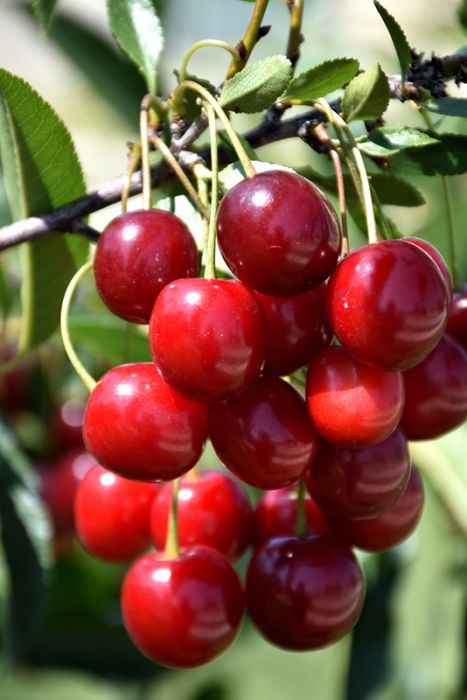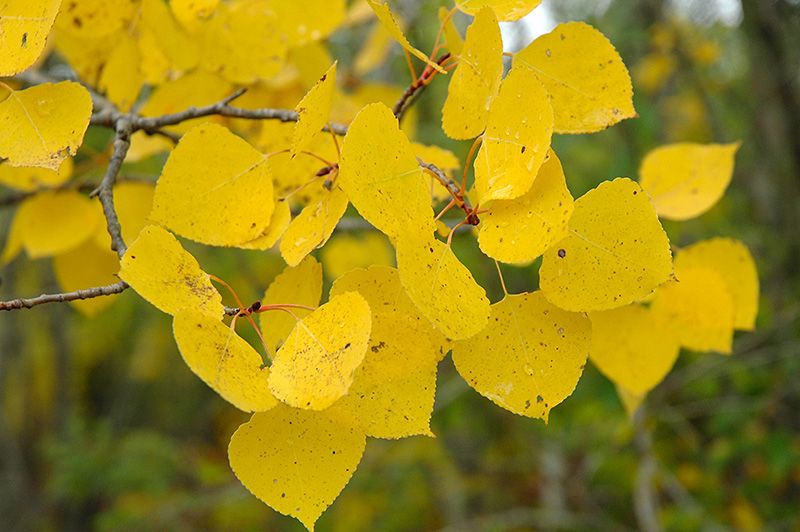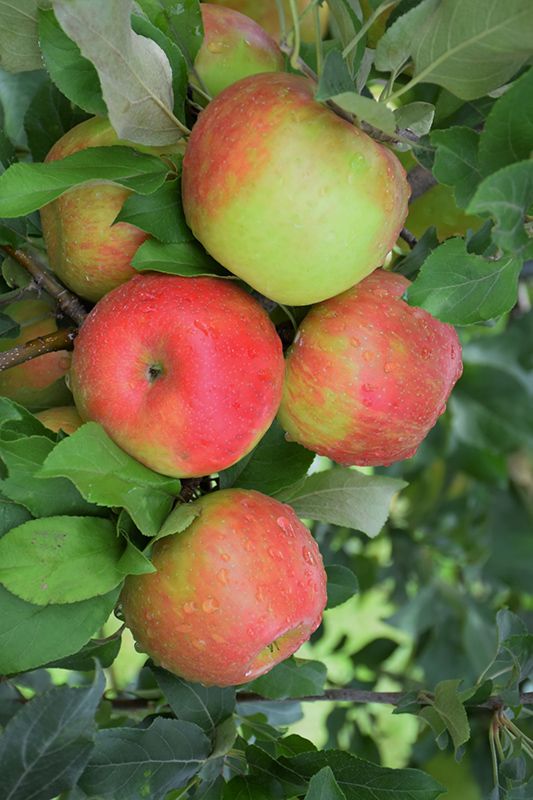Prunus, Cherry 'First Editions® Sweet Cherry Pie™'


- Sun Preference
- Full-Sun
- Bloom Time
- July
Description
A sour pie cherry variety bearing dark red fruit with a high sugar content, perfect for pies and preserves. Self fruitful, fruits ripen in mid July.
Minnesota's Largest Selection of Trees
At Minnesota's Destination Garden Center, we offer a diverse range of trees to suit any landscaping need. Whether you're looking for shade trees to cool your home or ornamental trees to add beauty and interest, you'll find the perfect tree at Gertens. Our knowledgeable staff can help you select the right tree for your space and provide tips for care and maintenance. Visit Gertens today and explore the unmatched variety of trees to enhance your outdoor environment!
Details
First Editions® Sweet Cherry Pie™ Cherry | Prunus 'Eubank'
Height: 15 feet
Spread: 12 feet
Sunlight: full sun
Hardiness Zone: 4a
Brand: First Editions
Description:
A compact, early bloomer with bright red cherries that are sweet and slightly astringent, fantastic for making jams. jellies, and pies; vigorous and hardy, it is perfect for a home garden or small orchard
Edible Qualities
First Editions® Sweet Cherry Pie™ Cherry is a large shrub that is commonly grown for its edible qualities. It produces cherry red round fruit (technically 'drupes') which are usually ready for picking from early to mid summer. Note that the fruits have hard inedible pits inside which must be removed before eating or processing. The fruits have a sweet taste and a juicy texture.
The fruit are most often used in the following ways:
Baking
Preserves
Features & Attributes
First Editions® Sweet Cherry Pie™ Cherry features showy clusters of fragrant white flowers along the branches in mid spring. It has green deciduous foliage. The glossy oval leaves turn yellow in fall. The fruits are showy cherry red drupes carried in abundance from early to mid summer.
This is a multi-stemmed deciduous shrub with a more or less rounded form. Its average texture blends into the landscape, but can be balanced by one or two finer or coarser trees or shrubs for an effective composition. This is a high maintenance plant that will require regular care and upkeep, and is best pruned in late winter once the threat of extreme cold has passed. It is a good choice for attracting birds to your yard. Gardeners should be aware of the following characteristic(s) that may warrant special consideration;
- Suckering
- Disease
Aside from its primary use as an edible, First Editions® Sweet Cherry Pie™ Cherry is sutiable for the following landscape applications;
- Accent
- Hedges/Screening
- General Garden Use
- Naturalizing And Woodland Gardens
- Orchard/Edible Landscaping
Planting & Growing
First Editions® Sweet Cherry Pie™ Cherry will grow to be about 15 feet tall at maturity, with a spread of 12 feet. It has a low canopy, and is suitable for planting under power lines. It grows at a medium rate, and under ideal conditions can be expected to live for 40 years or more. This is a self-pollinating variety, so it doesn't require a second plant nearby to set fruit.
This shrub is typically grown in a designated area of the yard because of its mature size and spread. It should only be grown in full sunlight. It does best in average to evenly moist conditions, but will not tolerate standing water. It is not particular as to soil type or pH. It is highly tolerant of urban pollution and will even thrive in inner city environments. This particular variety is an interspecific hybrid.
More Information
| Bloom Time | July |
|---|---|
| Tree Type | Fruit |
| Sun Preference | Full-Sun |
| Mature Height (Range) | 10 - 15 feet |
| USDA Hardiness Zone | 4, 5, 6, 7 |
| Common Family Name | Cherry |







